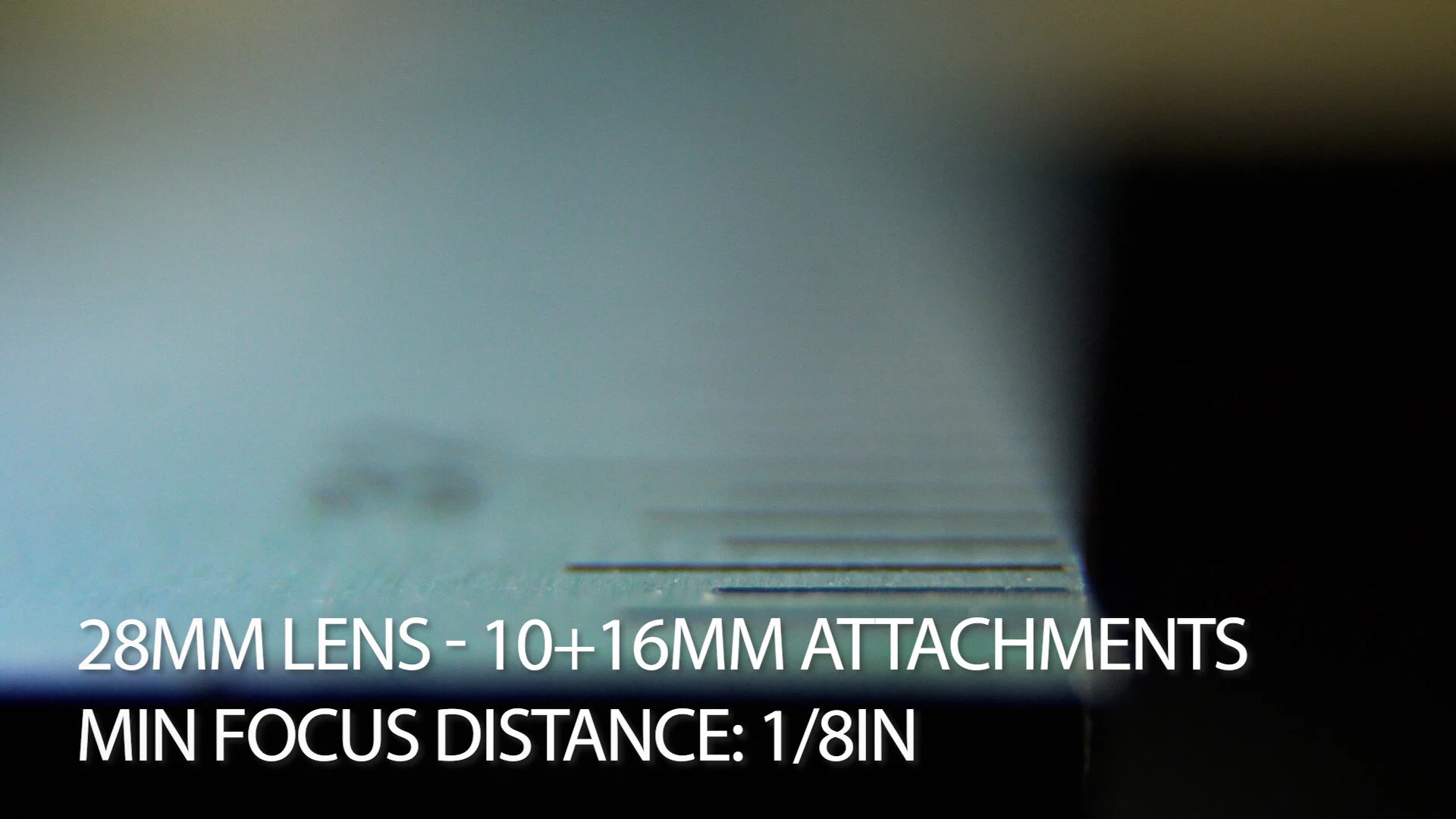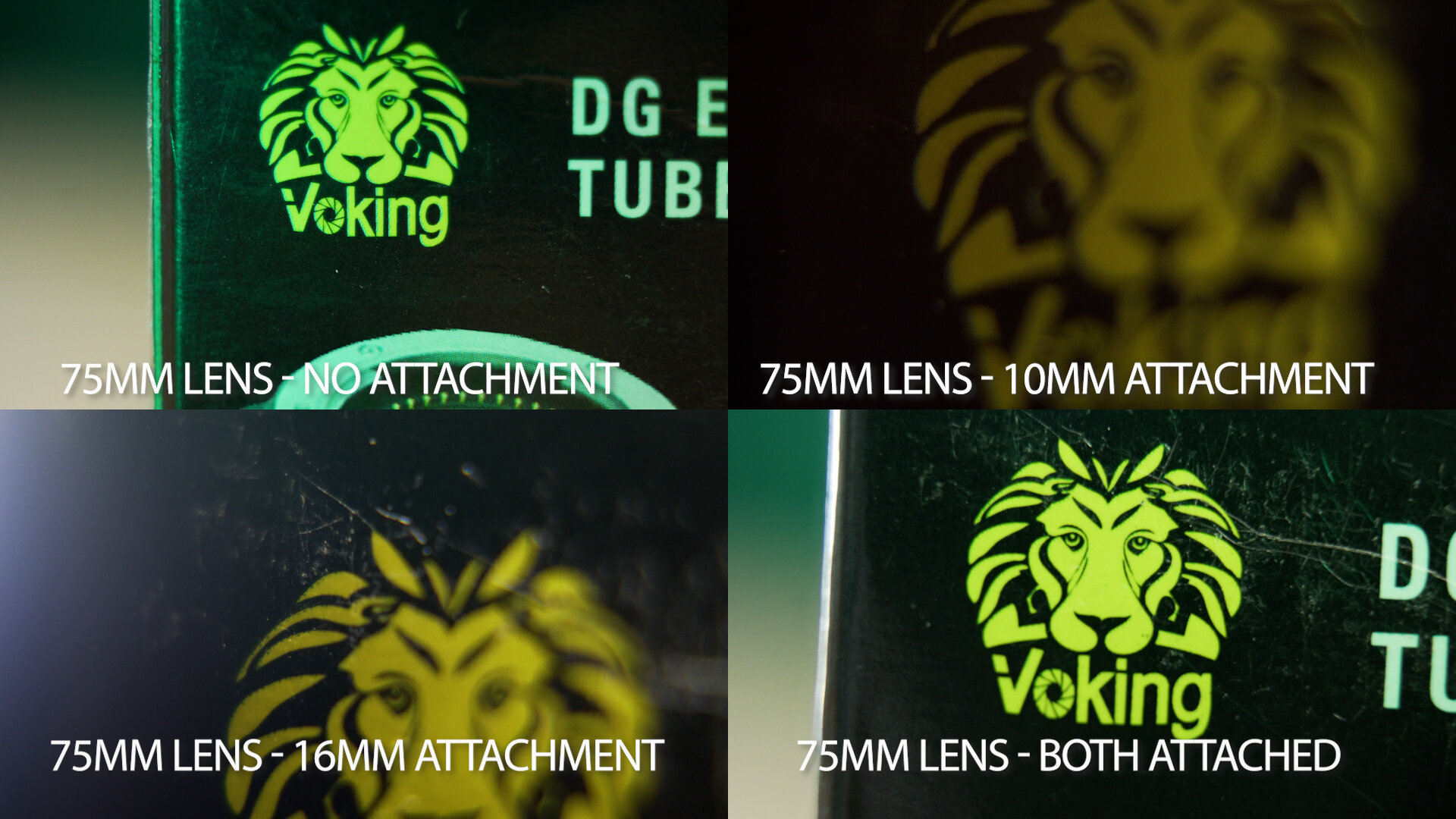Voking Automatic Extension Tube
An inexpensive but effective way to turn any lens into a killer macro lens? Sounds good to me! Let’s check it out:
Macro lenses capture detailed, sharp, extremely close up shots, such as water droplets on a piece of food or the intricate texture of a surface.
This video was shot using a Sony A6500 DSLR camera, which has a crop sensor. The advantage to using a crop sensor camera like the A6500, is the crop factor, meaning more zoom.
Part of the inspiration for purchasing a macro lens adapter were videos done by Daniel Schiffer. Much of his content features b-roll style videos, specifically of food. One of the lenses he tried out was a probe lens. A probe lens has lights, giving the ability to shoot in very dark spaces. Proper lighting is an extremely important factor in capturing crisp, defined close-ups.
As shown in the video, Nick utilized a Sony A6500 with a Tamron 28-75mm lens. This is our company's most used lens because it’s versatile, fast, has an f/2.8 constant aperture, and is fairly affordable when considering it gets f/2.8 through the entire zoom range.
The piece of equipment that turns any lens into a macro lens is a relatively simple tool called an extension tube. The one featured in this video was purchased from a company called Voking.
The product box has two metal rings with pins that maintain autofocus and aperture control. Because our company has a Sony camera, we got the e-mount version. The adapters are simply pieces of metal, as there isn’t actually a lens built in. It changes the focusing distance of attached lenses and also gives more zoom.
Using a ruler, Nick demonstrates the minimum focusing distance of the 28-75mm lens, without the attached extension tubes. As shown in the video, Nick places the ruler against the glass and the minimum focusing distance is somewhere around 2.25 inches at 28 millimeters. This test demonstrates the minimum focus distance of the extension tube.
Next, Nick looks at the minimum focusing distance at 75 millimeters. At 75 millimeters, the minimum focusing distance is adequate, at about 9 inches.
After, Nick puts the 10 millimeter extension tube on and shoots at 28 millimeters. At 28 millimeters, with the 10 millimeter extension tube, the minimum focusing distance is somewhere around 0.75 inches. This is quite a big jump.
The next test examines 75 millimeters, with the 10 millimeter extension tube. At this point, the focusing distance is just over 5 inches, displaying a drastic difference in the minimum focusing distance and the overall framing.
Using the same rule, Nick tests the 16 millimeter extension tube. He starts at 28 millimeters, with the focusing distance reduced to about ⅜ of an inch.
Still shooting at 75 millimeters, same as the 16 millimeter extension tube, the results are even more magnified at about 4.25 inches.
The final test Nick demonstrates in the video, stacks the 10 and 16 millimeter extension tubes together to see the different focusing distances that are visible at 28 millimeters. Looking at a minimum focusing distance of about ⅛ of an inch, the ruler touching up against the glass of the lens, and the lens at 75 millimeters with both extension tubes attached, the result is a minimum focusing distance of just over 3 inches.
Using a split screen, the video shows the different combinations, using the Voking logo on the product box as the subject. When looking at the split screen, all the different combinations and framings are visible, as well as the magnification that one can achieve with these different combinations. Each of the examples are shot at the minimum focusing distance possible.
Lenses can be very expensive, and unless working in a field where extreme close ups are required, purchasing a macro lens may not be top of the list. However, the Voking Automatic Extension Tube is an extremely useful tool that transforms existing lenses into very effective macro lenses at a fraction of the cost.
We highly recommend adding this tool to your collection!













